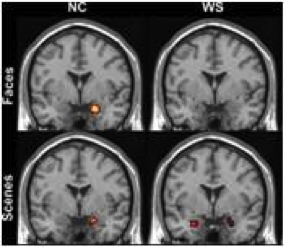What is It?
The Individuals with Disabilities Education Act defines a Traumatic Brain Injury as a type of brain injury caused by an external physical force, such as a blow to the head, which leads to complete or partial functional disability and/or psychological impairment that negatively affect a student’s educational performance. Traumatic brain injuries do not include injuries occurring internally, from chemicals, disease, or problems that have existed from birth or that are degenerative in nature. Trauma does not include brain injuries caused by birth trauma. These include external physical forces. Traumatic brain injuries can impair many different areas of a person’s life, including physical, cognitive, or psychosocial-behavioral-emotional impairments.

Physical impairments can include impairments to a person’s speech, vision, or hearing. It can also include headaches, lack of fine motor coordination, seizure disorders, and lack of balance. Cognitive impairments include impairments to perception, communication, planning, judgment, and reading and writing. Psychosocial-behavioral-Emotional impairments include fatigue, mood swings, anxiety, depression, agitation, lack of motivation, and restlessness. A person suffering a traumatic brain injury can have one or multiple of these impairments.
Traumatic Brain Injuries are unique because of the sudden onset of a severe disability. It is very difficult for families and children to deal with the sudden change. The family remembers how the child was before the injury, and often the child remembers how life was before the injury as well. This can lead to many psychological and emotional issues for the child and family. Many times young children don’t show signs of permanent damage for months or years until the brain starts to mature. The injured person and the family may continue to suffer more and more loss as years go by.
Prevalence
According to Center for Disease Control and Prevention (2012), 1.7 million people suffer Traumatic brain injuries every year in the United States. 1 million of these are children. Many of these injuries are the result of car accidents, falls, sports, or abuse. In the 2006-2007 school year, about 24 thousand students qualified for special education under the classification Traumatic brain injury, making up .4% of all students who qualified for special education services.
What does it look like in the classroom?
How to Identify and Respond
A student who has experienced a traumatic brain injury can show signs and symptoms in many different ways, depending on the severity and location of the trauma he or she experienced. Signs can include any of the physical, mental, behavioral, or emotional problems mentioned previously. Each child will demonstrate different problems in different areas. As time goes by, more difficulties may begin to appear. It may be difficult to tell whether a child’s problem is a result of the previous injury as more time passes. Early and consistent help is needed for these students.
Schools identify students with traumatic brain injuries by receiving documentation from the child’s doctor and parents that the injury occurred. Doctors, parents, and other service providers inform the school of the traumatic brain injury and any impairments or disabilities that may need accommodations. School personnel then determine whether the student’s impairments adversely affect the student’s educational performance and whether the student requires social education and related services. Multiple diagnostic measures are used to assess suspected areas of impairment.
Learning Support
Schools are the largest provider of services for children with traumatic brain injuries. When a student plans to enter or re-enter school after a traumatic brain injury, it is very important that school personnel and parents plan carefully to meet the needs of the child. It is important for everyone who works with the child to get to know the specific challenges the child experiences. Adults and children who knew the child before the injury may struggle to adjust their expectations of the child. The school must thoroughly evaluate the child’s academic needs. The parents and school must determine what service can and will be provided for the child. This information will be written up in the child’s Individualized Education Program (IEP). The School must follow this IEP in order to best help the child. Depending on the student’s needs, a student may qualify for help from a school psychologist or counselor, various kinds of special education teachers, a speech therapist, an occupational therapist, a physical therapist, or any other professionals available in the school the student is attending.
When working with a child who has experienced a traumatic brain injury, it is best to be flexible. When teaching the child, repetition and consistency can be helpful. Demonstrate new tasks, give explicit instruction, and give examples of ideas and concepts. Many of these students will experience more fatigue more quickly, so provide breaks as needed. A system of reinforcement should be used to increase the duration of attention the student can give as much as possible. Since the students ability to focus and pay attention is often impaired, try to keep the learning environment as free of distractions as possible. The student may need more time to complete work. To be sure that the student has learned a new skill, provide lots of opportunities for practice. Give simple directions one by one. If there are too many directions for the student to follow, write the directions down. Be sure to communicate with the parents often about how the child is doing in school. It is important that information be shared between the school and home.
References and Websites
United States
neuroskills.com
traumaticbraininjury.com
mayoclinic.com
cdc.gov
nichcy.org
United Kingdom
headway.org.uk
braininjurygroup.co.uk
Australia
Canada
cihr-irsc.gc.ca